第8章 PREFACE(8)
The Malays can hardly be said to have an indigenous literature, for it is almost entirely derived from Persia, Siam, Arabia, and Java. Arabic is their sacred language. They have, however, a celebrated historic Malay romance called the Hang Tuah, parts of which are frequently recited in their villages after sunset prayers by their village raconteurs, and some Arabic and Hindu romances stand high in popular favor. Their historians all wrote after the Mohammedan era, and their histories are said to contain little that is trustworthy; each State also has a local history preserved with superstitious care and kept from common eyes, but these contain little but the genealogies of their chiefs. They have one Malay historical composition, dated 1021 A.H., which treats of the founding of the Malay empire of Menangkabau in Sumatra, and comes down to the founding of the empire of Johore and the conquest of Malacca by Albuquerque in 1511. This has been thought worthy of translation by Dr. Leyden.
Their ethical books consist mainly of axioms principally derived from Arabic and Persian sources. Their religious works are borrowed from the Arabs. The Koran, of course, stands first, then comes a collection of prayers, and next a guide to the religious duties required from Mussulmen. Then there are books containing selections from Arabic religious works, with learned commentaries upon them by a Malay Hadji.
It is to be noticed that the Malays present a compact front against Christianity, and have successfully resisted all missionary enterprise.
They have a good deal of poetry, principally of an amorous kind, characterized, it is said, by great simplicity, natural and pleasing metaphor, and extremely soft and melodious rhyme. They sing their poems to certain popular airs, which are committed to memory. Malay music, though plaintive and less excruciating than Chinese and Japanese, is very monotonous and dirge-like, and not pleasing to a European ear. The pentatonic scale is employed. The violin stands first among musical instruments in their estimation. They have also the guitar, the flageolet, the aeolian flute, a bamboo in which holes are cut, which produce musical sounds when acted upon by the wind, and both metallic and wooden gongs.
They have no written system of common arithmetic, and are totally unacquainted with its higher branches. Their numerals above one thousand are borrowed from the Hindus, and their manner of counting is the same as that of the Ainos of Yezo.
Their theory of medicine is derived from Arabia, and abounds in mystery and superstition. They regard man as composed of four elements and four essences, and assimilate his constitution and passions to the twelve signs of the zodiac, the seven planets, etc., exaggerating the mysterious sympathy between man and external nature. The successful practice of the hakim or doctor must be based on the principle of "preserving the balance of power" among the four elements, which is chiefly effected by moderation in eating.
They know nothing of astronomy, except of some meagre ideas derived through the Arabs from the Ptolemaic system, and Mr. Newbold, after most painstaking research, failed to discover any regular treatise on astronomy, though Arabic and Hindu tracts on interpretations of dreams, horoscopes, spells, propitious and unpropitious moments, auguries, talismans, love philters, medicinal magic and recipes for the destruction of people at a distance, are numerous. They acknowledge the solar year, but adopt the lunar, and reckon the months in three different ways, dividing them, however, into weeks of seven days, marking them by the return of the Mohammedan Sabbath. They suppose the world to be an oval body revolving on its axis four times within a year, with the sun, a circular body of fire, moving round it. The majority of the people still believe that eclipses are caused by the sun or moon being devoured by a serpent, and they lament loudly during their continuance. The popular modes of measuring distance are ingenious, but, to a stranger at least, misleading. Thus Mr. Daly, in attempting to reach the interior States, received these replies to his inquiries about distance--"As far as a gunshot may be heard from this particular hill;" "If you wash your head before starting it will not be dry before you reach the place," etc. They also measure distances by the day's walk, and by the number of times it is necessary to chew betel between two places. The hours are denoted by terms not literally accurate. Cockcrowing is daybreak, 1 P.M., and midnight; 9 A.M., Lepas Baja, is the time when the buffaloes, which cannot work when the sun is high, are relieved from the plough; Tetabawe is 6 P.M., the word signifying the cry of a bird which is silent till after sunset. The Malay day begins at sunset.
They are still maritime in their habits, and very competent practical sailors and boat-builders; but though for centuries they divided with the Arabs the carrying trade between Eastern and Western Asia, and though a mongrel Malay is the nautical language of nearly all the peoples from New Guinea to the Tenasserim coast, the Malays knew little of the science of navigation. They timed their voyages by the constant monsoons, and in sailing from island to island coasted the Asiatic shores, trusting, when for a short time out of sight of land, not to the compass, though they were acquainted with it, but to known rocks, glimpses of headlands, the direction of the wind, and their observation of the Pleiades.
They have no knowledge of geography, architecture, painting, sculpture, or even mechanics; they no longer make translations from the Arabic or create fiction, and the old translations of works on law, ethics, and science are now scarcely studied. Education among them is at a very low ebb; but the State of Kedah is beginning to awake to its advantages.